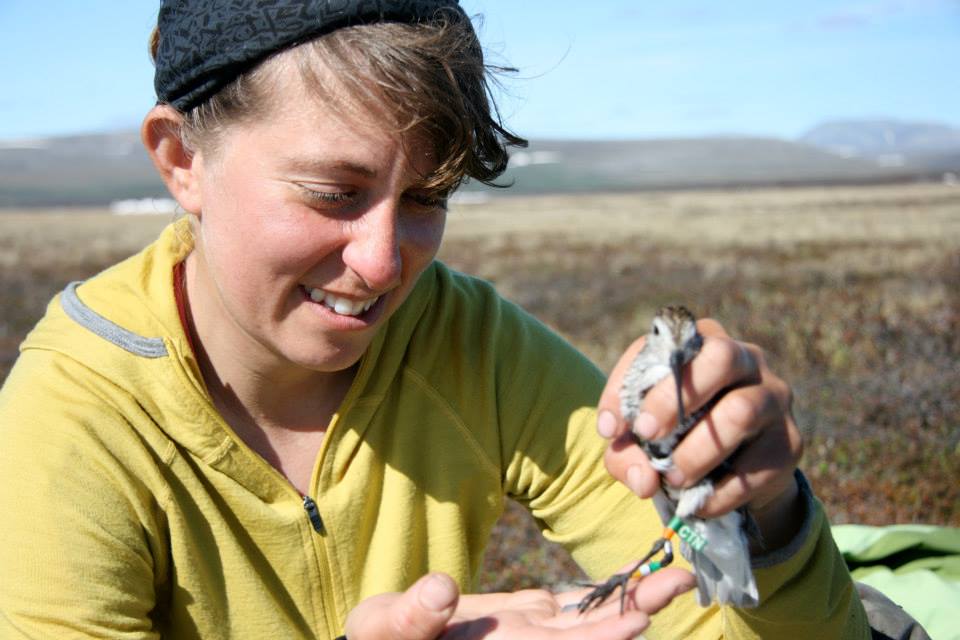One of these Western Sandpipers, known by its green engraved flag "1EU", was banded near Krusenstern Lagoon at Cape Krusenstern National Monument in 2013 and recaptured there in 2014.
Bird researchers put color bands on birds in unique combinations to help identify individuals from one year to the next. A banding code is read from left to right, with the bird facing away from the observer, using "over" to separate the upper leg from the lower leg. 1EU's full banding code is: left leg is metal over orange, red, light blue;right leg is green engraved flag (1EU) over orange.

Photo: Madi McConnell
A green flag over an orange band is a shorebird banding combination unique to Cape Krusenstern. Unique site combinations help direct reports of banded birds from anywhere along the migration route back to the researchers who banded them. Last week, Sandy Bowie spotted 1EU at Whiffen Spit, near Victoria, B.C and snapped the photo below. Sandy reports that it was traveling with five other Western Sandpipers, one Semipalmated Plover, and two Dunlins.
other Western Sandpipers, one Semipalmated Plover, and two Dunlins.

This Western Sandpiper was banded at Cape Krusenstern National Monument in June 2013 and resighted near Victoria, B.C. in May 2015. Resight and photo credit: Sandy Bowie
Because 1EU was wearing all of this "jewelry", birders in the know were able to track down the bird's original banding location, alerting the team of researchers who banded shorebirds in Cape Krusenstern between 2010 and 2014. Not only is it exciting to get reports of our birds, but this information can be used in studies that track survival and migration patterns of these shorebirds.
At the time of the report, 1EU still had 1,904 miles (3,064 kms) to go, as the Western Sandpiper flies, before reaching its breeding site at Cape Krusenstern. If you're out birding in Alaska this week, keep your eyes open for 1EU and other birds banded at sites all around Alaska, and more southerly locations throughout their migration routes!

1EU's 2013 and 2014 nesting site in Cape Krusenstern National Monument is marked with a yellow balloon. This bird was resighted at Whiffen Spit, in Sooke, B.C. in May 2015 (marked with a blue balloon). Whiffen Spit is a migratory stopover site for 1EU, where it was refueling for the last 1,904 miles (3,064 km) of its northward journey.
About the guest author:
Megan Boldenow, a graduate student at the University of Alaska Fairbanks and intern at U.S. Fish and Wildlife Service, is studying the effects of wintertime stress on arctic-breeding shorebirds. She led a field crew at Cape Krusenstern in May through July of 2013 & 2014, continuing studies initiated in 2010 by the former site lead, River Gates. Megan and River’s work was part of the larger Arctic Shorebird Demographics Network (ASDN), which was established to help determine the factors limiting populations of target shorebird species. Cape Krusenstern was one of sixteen ASDN sites spread over the North American and Russian Arctic. This is the first of a series of planned blog posts about the shorebird crew’s research and experiences at their study site near Krusenstern Lagoon.

